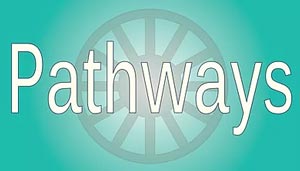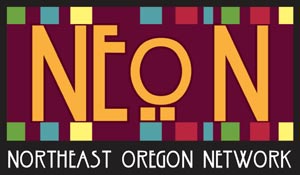NEON Pathways Community Hub
- Need: Connect individuals to services that address health barriers.
- Intervention: A pay-for-outcomes model utilizing Community Health Workers who help provide community members with tools to address needs associated with improving health.
- Results: Trained Community Health Workers help patients navigate the healthcare and social service systems and provide education about community healthcare resources.
Description
 The Pathways Community
Hub, managed by Northeast Oregon Network (NEON),
utilizes trained Community Health Workers (CHWs) to help
at-risk patients navigate health and social services
resources in the Oregon counties of Union, Baker,
Wallowa, Umatilla, and Malheur.
The Pathways Community
Hub, managed by Northeast Oregon Network (NEON),
utilizes trained Community Health Workers (CHWs) to help
at-risk patients navigate health and social services
resources in the Oregon counties of Union, Baker,
Wallowa, Umatilla, and Malheur.
The Pathways Community Hub model operates under the over-arching theme of improving patient health, bettering healthcare, and lowering costs by improving the quality of care.
 NEON currently has
contracts with 11 different organizations, or Contracted
Hub Organizations (CHOs), who employ and provide salary
support for the CHWs, allowing NEON to serve as a neutral
entity in this program, neither a service provider or an
employer. Instead, it pays the CHOs for the care pathways
successfully completed by CHWs.
NEON currently has
contracts with 11 different organizations, or Contracted
Hub Organizations (CHOs), who employ and provide salary
support for the CHWs, allowing NEON to serve as a neutral
entity in this program, neither a service provider or an
employer. Instead, it pays the CHOs for the care pathways
successfully completed by CHWs.
First identifying high-risk patients, CHWs assess patient needs and determine which of the seven available evidence-based pathways will be most suitable. These pathways focus on key areas of health and social services which might require the most assistance to navigate. The final goal is improving local health outcomes by connecting individuals with needed resources.
Once a pathway is completed, payment is generated to the employing CHW organization as compensation for work completed. Using a community-based data tracking system, all payments to Hub partners are based on successfully completed pathways.
This evidence-based compensation model has shown to be the most efficient and valuable payment structure for the Pathways Community Hub model. The payment model awards organizations that work effectively and efficiently. As partners, they can earn more money based on the amount of success achieved.
The community-based data tracking system monitors patient outcomes and serves as the invoicing system for outcomes model pay. Throughout this program, the Hub allows for close tracking of an individual's health journey, making it an efficient way to target patient health outcomes and improvements.
To help the Hub in achieving its goals, a leadership team was formed consisting of partner organizations and other stakeholders from the five-county area. This group determined what pathways should be used and created a guide that governs the functions and operations of the Hub. They also oversee continuing high-level decision-making for the Pathways Community Hub.
With a previous target population assisting a population with or at risk of developing chronic conditions, in 2018 two new federal awards allowed NEON to include attention for individuals struggling with drug misuse or at-risk for misuse, attention that actually addresses the similar barriers leading to poor health outcome for those with chronic diseases. Given this new target population focus, NEON was also able to expand partnerships to include the housing and addiction treatment sectors in the region.
Both uninsured and underinsured patients under current care by a health care provider can enroll in the program in order to streamline their healthcare experience utilizing the Pathways Community Hub's centralized infrastructure. This infrastructure helps avoid repeat lab tests, doctor visits, and similar duplication. By joining this program, patients and providers both will benefit from cost savings associated with preventive care methods, and from close monitoring of patient needs. Several partners have decreased emergency department visits by using CHWs.
The infrastructure for this program was developed in 2012 from a Centers for Disease Control grant. Starting in October of 2014, the program moved into the launch phase with operational funding provided by a Federal Office of Rural Health Policy Network Development grant followed by the same award in 2017 used to expand the service area. Previous outcome payments came from funding through the Meyer Memorial Foundation as well as a Knight Cancer Foundation grant. Current funding also includes a 2018-2021 Rural Health Care Services Outreach Program Grant, a 2020-2023 Rural Health Network Development Grant, and a Rural Health Opioid Program, all 3 awards through the Federal Office of Rural Health Policy.
Services offered
This program focuses on helping community members successfully navigate through seven evidence-based pathways:
- Health insurance coverage
- Medical homes
- Medical referrals
- Medication assessments
- Medication management
- Social service referrals
- Tobacco cessation
Organizations that staff CHWs and contract with NEON benefit from:
- Increased community networking
- Increased awareness of local organizations providing health and social services
- Collaborative work between organizations to positively impact health in the community
- Increased revenue through outcomes payments
- Improved care for the patients/clients/community members that they serve
Results
With participation changing over the years since the program's inception, NEON is currently working with 1 CHOs and over 30 CHWs to provide community members the tools and resources to address their specific healthcare needs. CHWs have provided public education on health and social services, such as:
- Prenatal care
- Immunizations
- Chronic disease management
- Parenting education
- Housing
- Food
- Clothing
- Diabetes prevention
Challenges
The main challenges surrounding this program include:
- Sustainable funding sources
- Payment models based on outcomes and typically, there is no immediate payment
- Providing program value education to organizations and potential payers
- Identifying the appropriate time frame that allows a meaningful measurements of health outcomes reflecting a CHW's work with an individual or family
Replication
In order to implement a similar program in other communities, it is important to:
- Seek out start-up funding for initial CHWs salaries
- Work with the community to hire CHWs
- Form an active leadership team with community organizations involved in the decision-making process
- Be mindful that the program a slow implementation process
- Identifying the appropriate time frame that allows meaningful measurements of health outcomes reflecting a CHW's work with an individual or family
Contact Information
Liberty Avila, Executive DirectorNortheast Oregon Network
541.624.5101
lavila@neonoregon.org
Topics
Community health workers
· Health screening
· Human services
· Reimbursement and payment models
· Uninsured and underinsured
· Wellness, health promotion, and disease prevention
States served
Oregon
Date added
May 11, 2015
Suggested citation: Rural Health Information Hub, 2020 . NEON Pathways Community Hub [online]. Rural Health Information Hub. Available at: https://www.ruralhealthinfo.org/project-examples/796 [Accessed 20 November 2025]
Please contact the models and innovations contact directly for the most complete and current information about this program. Summaries of models and innovations are provided by RHIhub for your convenience. The programs described are not endorsed by RHIhub or by the Federal Office of Rural Health Policy. Each rural community should consider whether a particular project or approach is a good match for their community’s needs and capacity. While it is sometimes possible to adapt program components to match your resources, keep in mind that changes to the program design may impact results.
